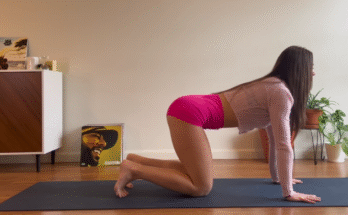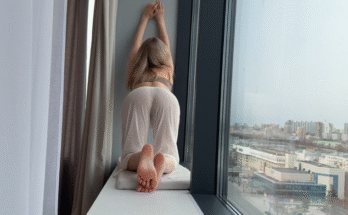
We’ve all heard the phrase, “An apple a day keeps the doctor away,” but what if we told you that a stretch a day might be just as powerful—if not more? In today’s fast-paced world, our bodies are constantly put under stress. From sitting too long at our desks to scrolling endlessly on our phones, modern life often means stiff joints, tight muscles, and poor posture. But there’s good news: incorporating just a few minutes of stretching into your daily routine can make a world of difference to your overall health.
Why Stretching Matters
Stretching is more than just a warm-up or a cool-down during exercise. It’s a form of movement that helps keep the muscles flexible, strong, and healthy. Flexibility is necessary to maintain a full range of motion in the joints. Without it, muscles shorten and become tight. When you use them for activity, they become weak and unable to extend all the way. That puts you at risk for joint pain, strains, and muscle damage.
Stretching also increases blood flow to the muscles. Better circulation improves recovery from muscle soreness and injuries, and helps deliver oxygen and nutrients throughout the body more efficiently. Think of stretching as a gentle way to tell your body, “I care.”

The Physical Benefits of Daily Stretching
1. Improved Flexibility:
Over time, daily stretching can increase your flexibility, which is essential for your overall physical health. Increased flexibility makes everyday activities easier and delays the reduced mobility that can come with aging.
2. Better Posture:
Stretching strengthens and lengthens your muscles, especially those in the back, chest, and shoulders. This can help correct posture issues and prevent the hunched shoulders and back pain that often come from long hours at a desk.
3. Enhanced Performance in Physical Activities:
Whether you’re a casual walker, a yoga enthusiast, or a competitive athlete, flexibility and range of motion can significantly impact how efficiently you move and reduce your risk of injury.
4. Injury Prevention:
When muscles are tight, they’re more likely to be injured during physical activity. Stretching keeps the muscles long and lean, reducing strain and improving coordination.
5. Reduced Muscle Soreness:
A short stretching session after exercise can help ease soreness by increasing blood flow and clearing out lactic acid from the muscles.

The Mental and Emotional Benefits
Stretching isn’t just good for your body—it’s also great for your mind. That simple act of reaching, bending, and breathing deeply can serve as a calming ritual.
1. Stress Relief:
Tension often builds up in our bodies, especially in the neck, shoulders, and back. Stretching these areas can relieve physical tension and send signals to your brain to relax.
2. Mental Clarity:
Taking a few minutes to focus on your body and your breath during stretching can help clear your mind and reduce anxiety. It’s a simple mindfulness practice in motion.
3. Better Sleep:
Stretching before bed can help ease your body into rest mode. Gentle movements and breathing exercises can reduce tension and set the stage for more restful sleep.

How to Start a Daily Stretching Routine
You don’t need to commit to an hour-long yoga class to experience the benefits of stretching. Even 10–15 minutes a day can make a difference. Here’s how to get started:
Morning Stretch (5–10 minutes)
Wake up your body with gentle stretches to energize you for the day ahead.
- Neck Rolls – Loosen the tension in your neck.
- Shoulder Rolls – Release tightness from sleeping.
- Side Bends – Stretch out the spine and waist.
- Forward Fold – Loosen your hamstrings and lower back.
- Cat-Cow Stretch – Mobilize your spine and wake up the body.
Midday Stretch (5–10 minutes)
Combat the effects of sitting with these posture-friendly moves.
- Chest Opener – Stand and clasp your hands behind your back, opening the chest.
- Seated Spinal Twist – Improve posture and relieve spinal tension.
- Hip Flexor Stretch – Stretch the front of your hips if you’ve been sitting all day.
- Wrist Stretches – Give your hands and wrists a break from typing.
Evening Stretch (10 minutes)
Wind down your day with deep, relaxing stretches.
- Seated Forward Bend – Relax the spine and legs.
- Butterfly Pose – Open your hips and stretch the inner thighs.
- Reclined Spinal Twist – Gently rotate the spine.
- Legs Up the Wall – Calm your nervous system and reduce swelling in the legs.
- Child’s Pose – A gentle resting pose to close your practice.

Tips for Stretching Safely
- Warm up first. Stretching cold muscles can lead to injury. Try a few minutes of light walking or arm swings.
- Don’t bounce. Bouncing into a stretch can cause tiny tears in the muscle. Use slow, steady movements.
- Feel the stretch, not the pain. You should feel tension, not discomfort.
- Breathe deeply. Your breath helps your muscles release and deepens the stretch.
- Be consistent. Like brushing your teeth, daily stretching becomes more effective the more regularly you do it.
The Long-Term Rewards
Imagine waking up without back pain, getting through the workday without shoulder stiffness, or feeling lighter and looser after a long walk or workout. These aren’t distant dreams—they’re the very real outcomes of incorporating stretching into your daily routine. Over time, the benefits multiply: better balance, fewer injuries, less pain, and a more relaxed mind.
Stretching is a powerful, underrated tool in maintaining long-term health. It’s free, it doesn’t require any equipment, and you can do it anywhere. Whether you’re young or old, athletic or sedentary, the benefits are available to everyone.
So next time you’re scrolling through your phone, watching TV, or waiting for your coffee to brew, take a moment to stretch. Reach up high. Roll your shoulders. Twist your torso. Breathe.
Remember: A stretch a day really can keep the doctor away.



